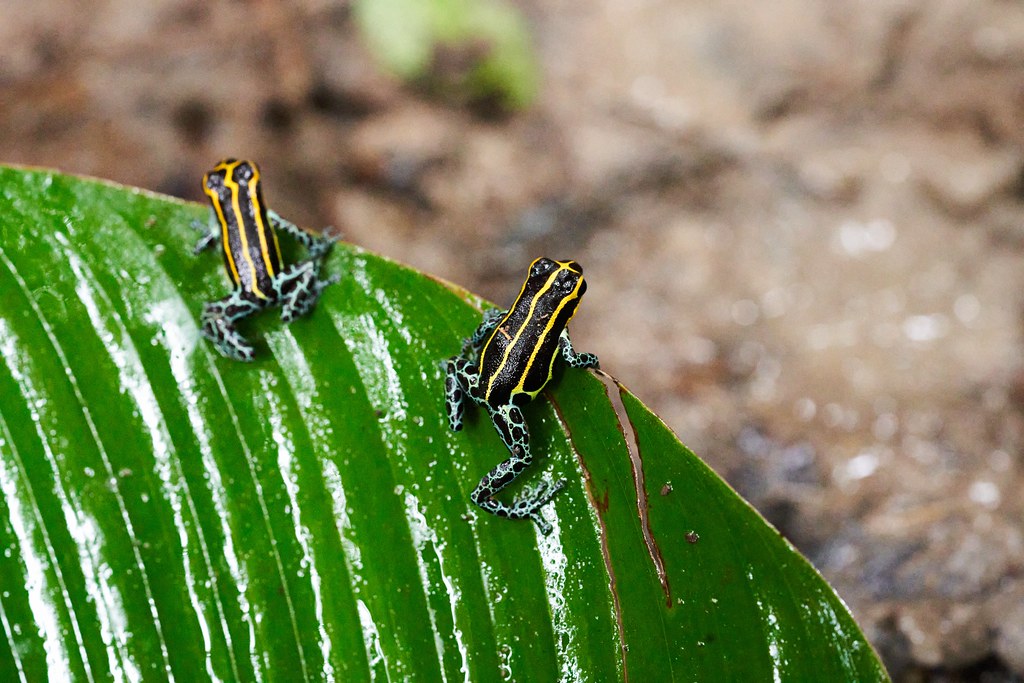Ranitomeya amazonica
Ranitomeya amazonica

No English name
Can you find the small frogs with blue legs and a black-and-orange pattern on the back? They belong to a species that so far has no English name but is called Ranitomeya amazonica in Latin.
The frog belongs to the family known as poison dart frogs. Not all poison dart frogs are poisonous, and the ones that are do not produce the toxins themselves – instead, it comes from their diet. This means that poison dart frogs in captivity are not poisonous, as they are reared on diets that do not contain any poisonous insects.

Photo: inktomi-CC-BY-NC
Lays both fertilised and unfertilised eggs
Ranitomeya amazonica lays its eggs in small pools of water accumulated in bowl-shaped plants, usually plants belonging to the bromeliad family. The female can lay eggs as often as once a week, the whole year round. She lays 4–10 eggs in each pool of water.
She sometimes lays unfertilised eggs in the same pool – full of nutrition for the newly-hatched tadpoles. When the tadpoles have hatched, the male can transport them to new pools of water if necessary. The tadpoles have developed into small frogs 2–4 months after hatching and can then survive out of the pools.

Photo: Du-Marques-CC-BY-SA
Distribution worldwide

The Iquitos region of Peru.
Threat based on the Red List
Data deficient – DD
Trade regulations
CITES: B-listed.